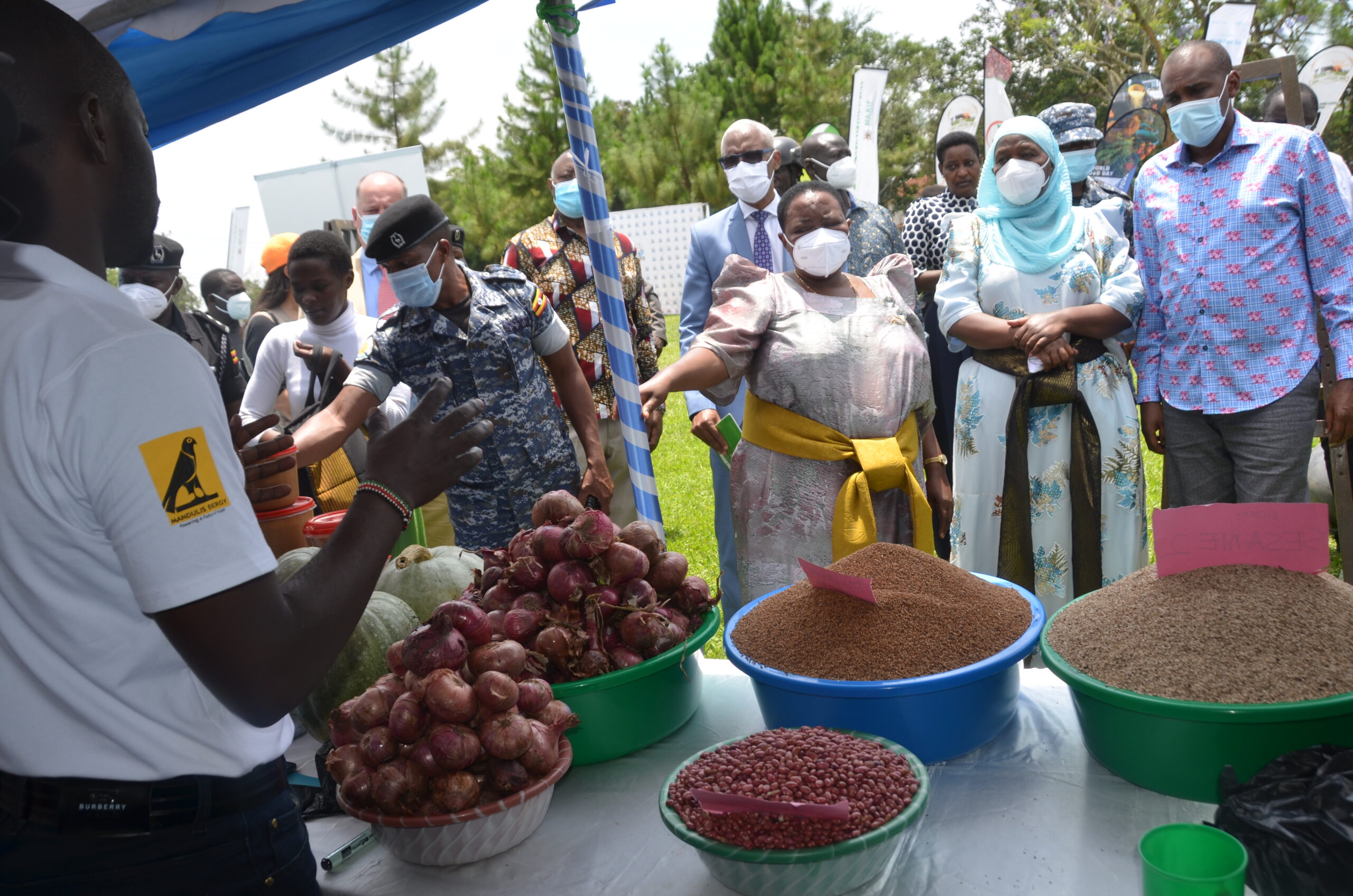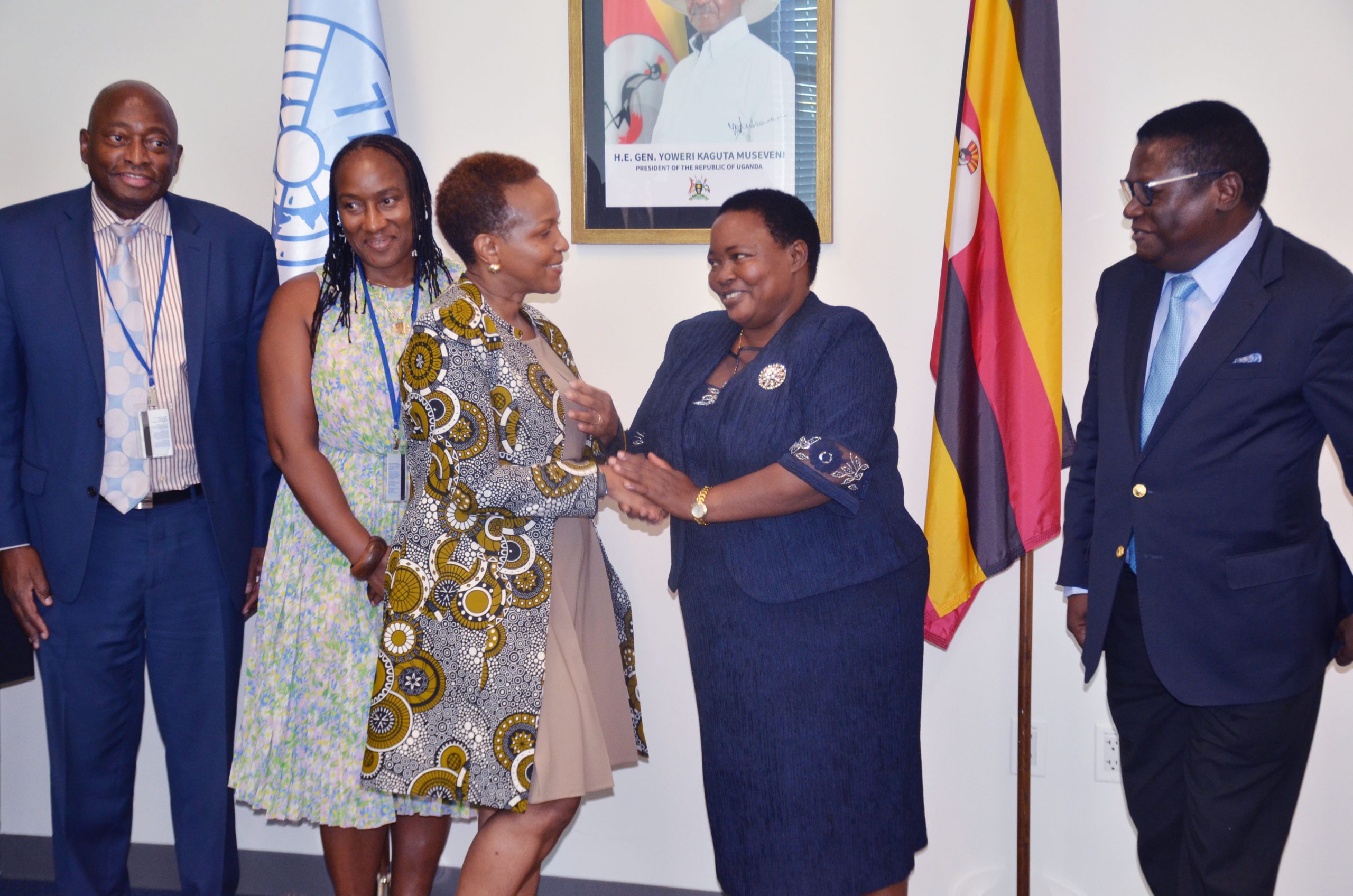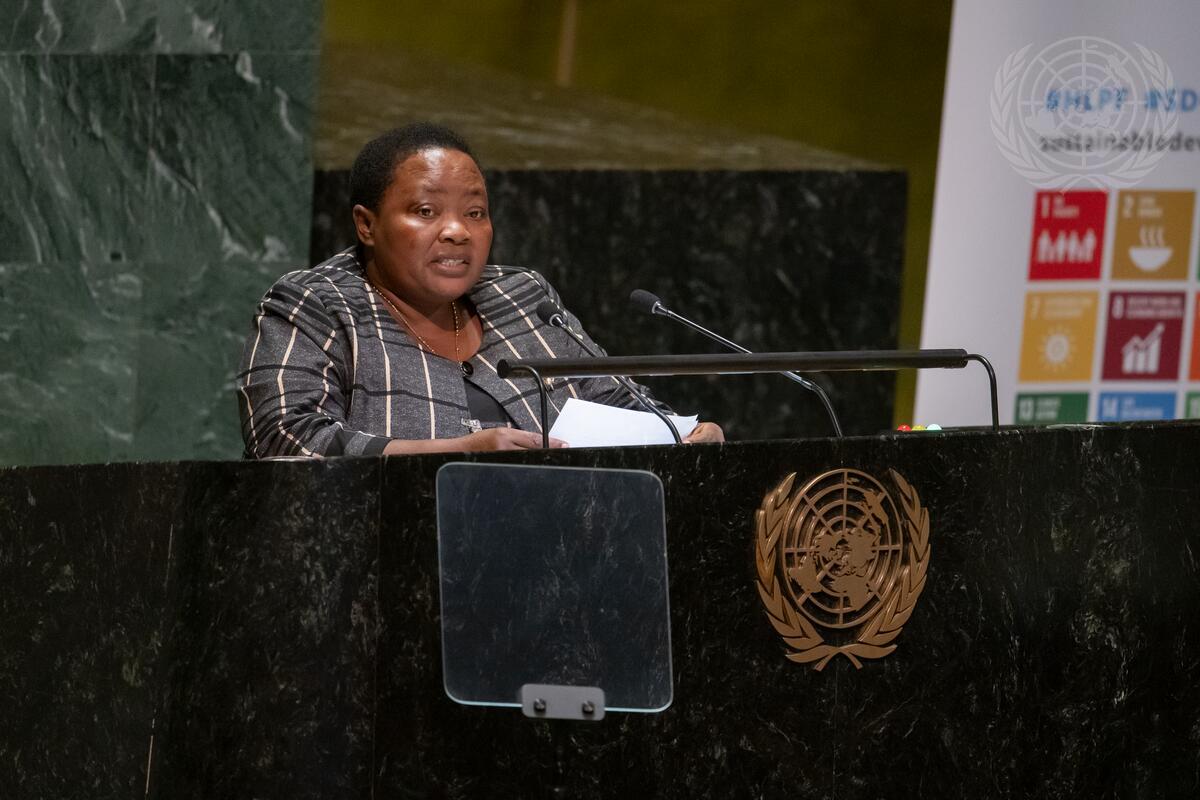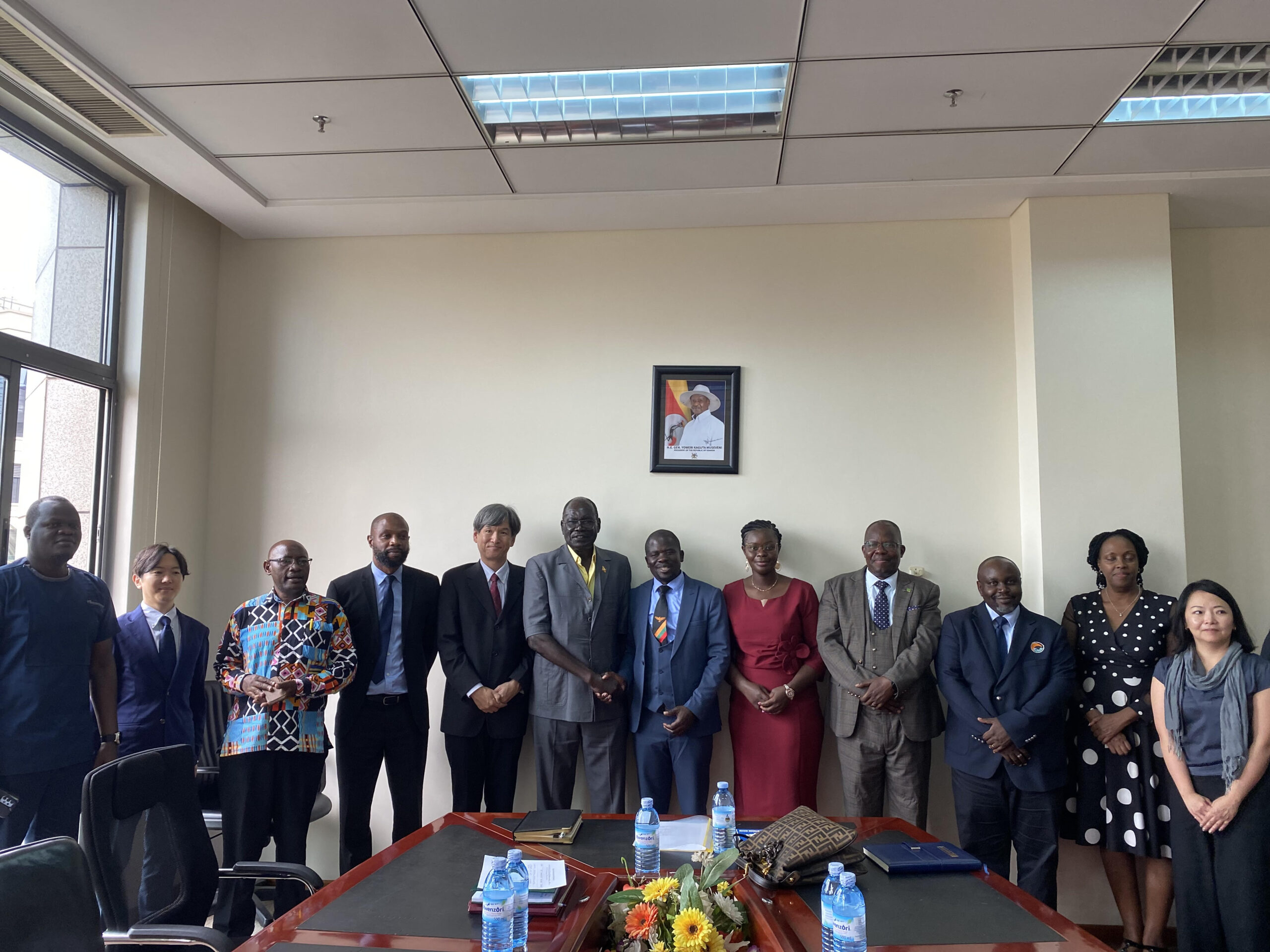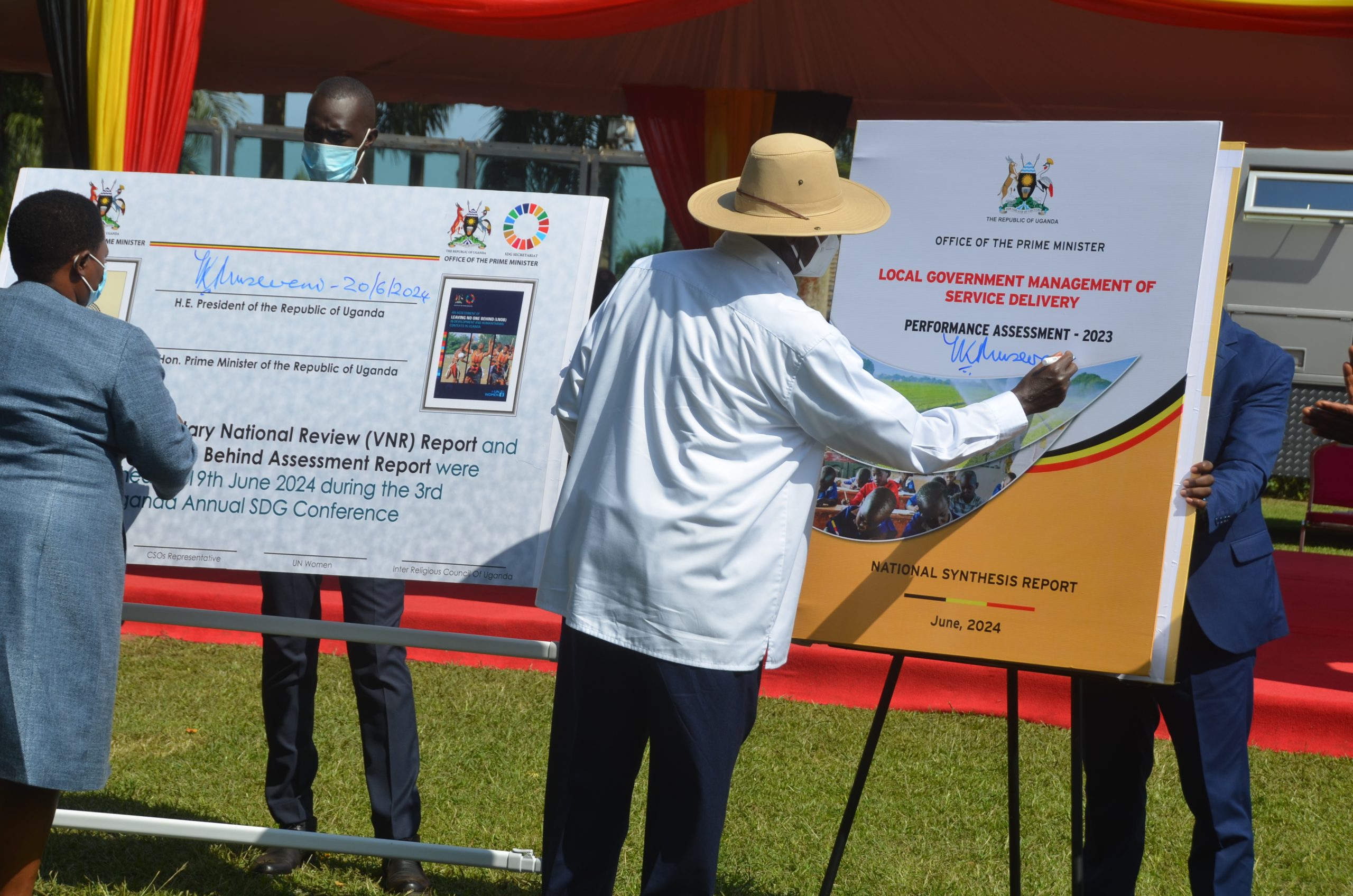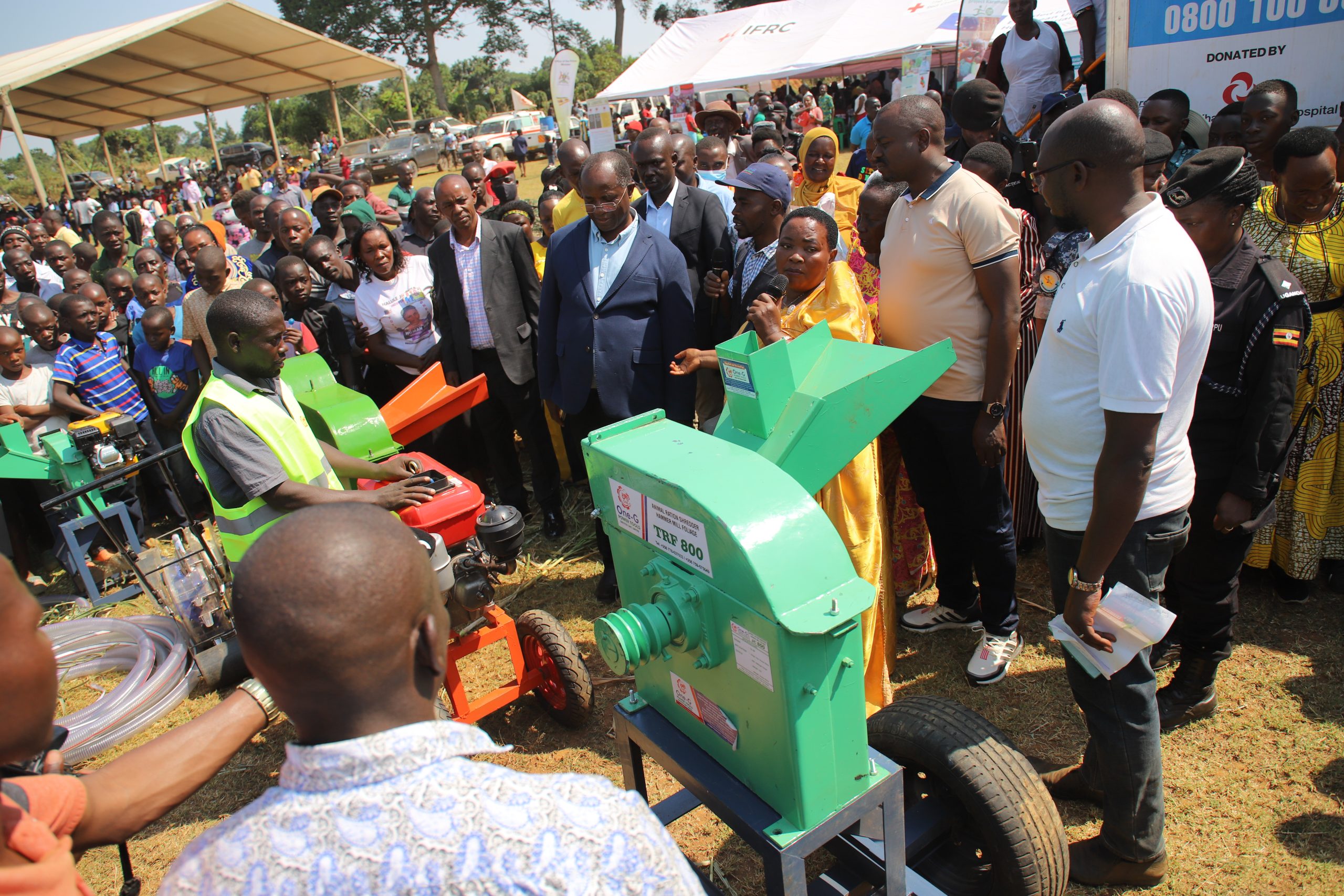By: Ismael Kasooha
WAKISO
Prime Minister Rt. Hon. Nabbanja Robinah has decried some parts of Uganda being hit by hunger as an embarrassment to the Pearl of Africa.
“Due to a number of factors, such as extended droughts, poor yields, pests and diseases, insecurity and poor farming practices, our friends in Karamoja, Teso and parts of Acholi are facing hunger. This is an embarrassment for a country that prides itself as gifted by nature and as a country with fertile soils and abundant water and good weather,” noted Nabbanja.
Nabbanja was on Sunday October 16, 2022 presiding over this year’s World Food Day main celebrations held at the National Crop Resources Research Institute (NaCRRI) at Namulonge, Wakiso District under the theme “Leave no one behind: Better Production, better nutrition, a better environment and better life“.
She said that the theme was timely and as a country, there was need to grow a variety of foods to feed the growing population and leave no one behind.
“Ladies and gentlemen, we are marking this World Food Day when the world is grappling with the effects of COVID-19 pandemic, shortages in the global supply chains, very high inflation levels, climate change challenges, all of which have an impact on food systems,” said Nabbanja.
She said that in moments like these, it was more important to recognize the need to support our food heroes – the farmers, market vendors, transporters, processors, among others who support the food systems – and make sure that food makes its way from the farm to the plate.
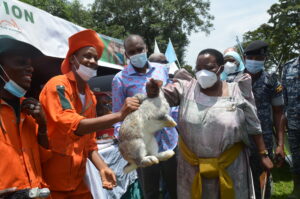
The Prime Minister Rt. Hon. Nabbanja Robinah lifting a rabbit during the inspection of stalls at the World Food Day celebrations at Namulonge
“The food insecurity in parts of this country should make us pause and ask ourselves what we are not doing right and what we need to do better. It should make us pause and ask ourselves what our scientists in the Ministry of Agriculture, private sector, and everyone are not doing right. It should make us pause and ask what the leadership at all levels, from the politicians, religious and cultural leaders are not doing right,” explained Nabbanja.
She challenged stakeholders attending the celebrations to move from mere statements during such celebrations.
“When we meet for functions like these, we should not just stop at making nice statements, but commit ourselves to practically make a difference in the lives of our people,” said the Premier.
She said that the NRM Government continues to prioritize agriculture as one of the key sectors to drive Uganda’s economy in terms of employment, food and Nutrition, security and wealth creation.
The sector has continued to register significant progress contributing 26.2% of National GDP, 54% of exports and employing over 70% of Uganda’s population.
This is a result of continued investment in agriculture and recently intensified effort in supporting the provision of planting and stocking materials as well as delivery of agricultural extension services.
Nabbanja said that the success of the Parish Development Model, our game changer program for improving household incomes and fighting poverty should in many ways also contribute to food security as agriculture is a key pillar of the program.
“We also need to harness the benefits of regional integration through trade and strengthening Intra-African trade especially markets for value added agricultural products,” she said.
Nabbanja said that there was need to make strategic investments in water for agriculture production so as to have sustained productions all the year round.
The Premier said that in order to regionalize the delivery of mechanization services as well as Water for Agriculture Production services across the country, Government had opened up Regional Mechanization Centers at Namalere, Buwama, Agwata, Kiryandongo, and Mbale. The whole country will be covered in the phased manner.
She noted that using the acquired heavy earth moving equipment, Government constructed and rehabilitated valley tanks in the drought and cattle corridor Districts country wide.
“Government continues to invest in irrigation infrastructure as well as demonstrating simple irrigation and water harvesting technologies. Government will continue to support sustainable farming systems which produce nutritious diets for all people while protecting the capacity of future generations to feed them,” emphasized Nabbanja.
She said that government remains committed to developing agricultural production and productivity technologies for feeding our people.
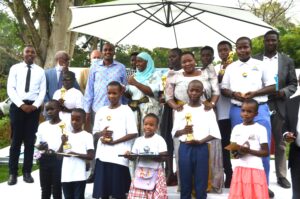
Winners in various categories pose for a photo with the chief guest and other dignitaries during the World Food Day celebrations at Namulonge
Frank Tumwebaze, the Minister for Agriculture, Animal Industry and Fisheries (MAAIF) noted that agro-food-systems transformation is a key to socio-economic transformation and as such, it was imperative that the country took advantage of the celebration to take stock of developments and commitments made to make food and animal feed available, affordable, and nutritious in order to foster sustainable development and prosperity for all.
“In this regard, MAAIF is using Parish Development Model (PDM) to liberate farmers stuck in subsistence 39.5% to graduate to commercial production. So as to raise family income to at least sh20m annually. This effort is also emphasizing the issue of food, animal feed, and nutrition security,” he added.
He cited some of the commodities being promoted including coffee, poultry for eggs, zero grazing for dairy, piggery, fish farming, and food/animal feed.
The Minister said the Ministry had also embarked on a strategy to boost food and animal feed production. “It has mobilized Ministries Departments and Agencies (MDAs) to utilize the available land and resources to produce enough food and animal feed,” he stressed.
Tumwezabe said that the initiative was being implemented this planting season by Uganda Prisons Services, National Enterprise Cooperation (NEC), Uganda Peoples Defenses Forces (UPDF), National Agriculture Research Organisation (NARO), and The National Animal Genetic Resources Centre and Data Bank (NAGRC & DB).
Several agricultural products, inputs and value addition mechanisms were exhibited.
End
